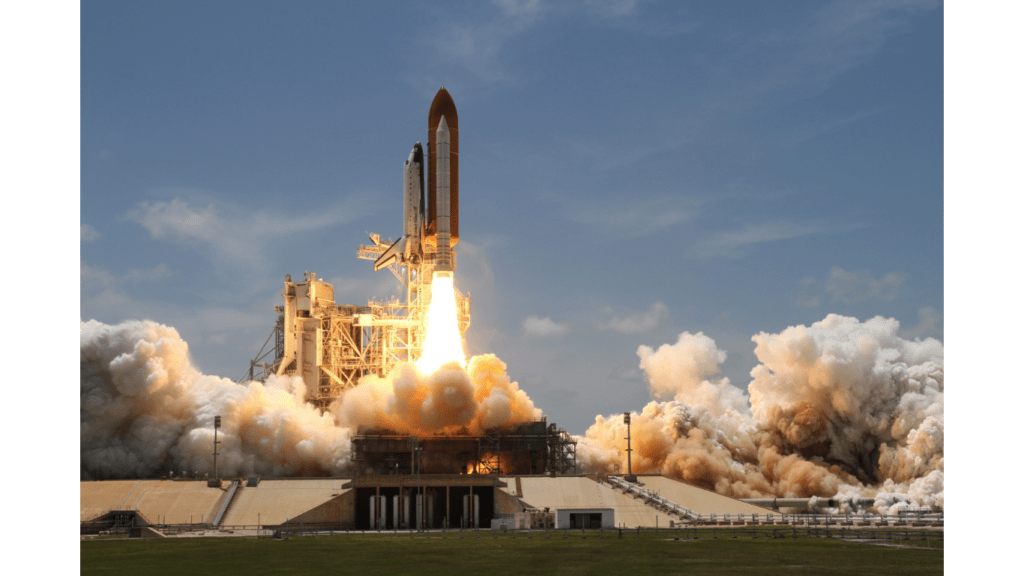The Evolution of Space Exploration Technology
From Gunpowder to Giant Leap: A Brief History
Exploring the evolution of space exploration technology offers a captivating journey through time. Beginning with humble origins rooted in the development of gunpowder, which laid the foundation for modern rocketry, each innovation propelled us further into the cosmos. The progression from rudimentary Chinese fireworks to the monumental achievement of the Apollo 11 moon landing showcases the relentless human spirit of exploration and discovery.
Milestones in Rocketry Tech That Shaped Space Missions
The timeline of space exploration is punctuated by pivotal milestones in rocketry technology that reshaped our understanding of the universe. Notable advancements such as the launch of Sputnik, the first artificial satellite orbiting Earth, heralded a new era of space exploration. The development of liquid-fueled rockets by visionaries like Robert Goddard and the advent of multi-stage rockets revolutionized our ability to travel beyond our planet’s confines. These breakthroughs paved the way for unprecedented space missions, enabling us to probe the depths of the cosmos like never before.
Advancements in Rocket Propulsion
Breaking Down the Chemical Rockets
Chemical rockets are the workhorses of space exploration, relying on chemical reactions to generate thrust. They operate by burning propellants to create high-speed exhaust that propels the rocket forward. The two main components of a chemical rocket are the fuel and the oxidizer. The fuel provides the energy, while the oxidizer supplies the oxygen needed for combustion. This simple yet effective technology has been fundamental in propelling human-made spacecraft beyond Earth’s atmosphere.
The Rise of Reusability in Rocket Design
The concept of reusability in rocket design has gained significant traction in recent years, notably with the development of reusable rocket systems by companies like SpaceX. Reusable rockets aim to reduce the cost of space travel by allowing the same launch vehicle to be used for multiple missions. By landing and refurbishing rockets instead of discarding them after a single use, reusability promises to make space exploration more sustainable and cost-effective, opening up new possibilities for missions both near and far.
Ion Thrusters and the Future of Propulsion
Ion thrusters represent a cutting-edge technology in propulsion systems, offering high efficiency and long-term operation compared to traditional chemical rockets. These thrusters work by accelerating ions using electric fields to generate thrust. While currently used mainly in unmanned space missions due to their low thrust levels, ongoing research aims to enhance ion thrusters’ capabilities for broader applications, such as crewed missions to distant planets. The development of ion propulsion holds great promise for the future of space exploration, offering the potential for faster and more efficient travel throughout the cosmos.
Materials and Structural Innovations
Composites and Alloys: Building Lighter and Stronger Rockets
- Innovations in materials science have revolutionized rocket design, leading to the use of composites and alloys that offer a unique combination of strength and lightness. By incorporating carbon fiber composites into rocket structures, engineers can create strong yet lightweight components that enhance payload capacity and fuel efficiency. These advanced materials are crucial in reducing the overall weight of rockets, enabling them to carry heavier payloads or travel farther into space. Alloys such as titanium and aluminum provide excellent structural integrity while keeping the weight manageable, essential for achieving optimal performance in space missions. The utilization of these composites and alloys marks a significant advancement in rocketry, pushing the boundaries of what’s possible in space exploration.
Heat Shields and Survival in Extreme Environments
- Ensuring the safety and functionality of spacecraft during reentry or in harsh space environments requires robust heat shield technologies. Heat shields are vital components that protect spacecraft from the intense heat generated during atmospheric reentry, allowing for a controlled descent without compromising the structural integrity of the vehicle. Advanced thermal protection systems, including ablative materials and ceramic tiles, are designed to withstand extreme temperatures experienced during atmospheric reentry, safeguarding the crew and payload onboard. These heat shield technologies play a critical role in enabling spacecraft to withstand the rigors of space travel, making it possible for missions to return safely to Earth’s surface. The development of innovative heat shield solutions represents a vital aspect of enhancing the reliability and safety of space exploration missions.
Satellite and Communications Breakthroughs
- As I delve into the realm of satellite and communications breakthroughs, I’m fascinated by the innovations propelling space exploration to new heights. Let’s explore two cutting-edge advancements in this field that are reshaping the way we perceive and interact with space.
Miniaturization of Satellites: CubeSats and Beyond
Innovations in satellite technology have led to a revolutionary trend in miniaturization, with CubeSats emerging as a prominent example of this transformation. These small, cube-shaped satellites, typically weighing a few kilograms, are designed for a variety of missions, ranging from Earth observation to scientific research and technology demonstration. The compact size and modular nature of CubeSats offer cost-effective solutions for space exploration, enabling universities, research institutions, and commercial entities to participate in space missions with reduced financial barriers.
Beyond CubeSats, the trend of miniaturization has paved the way for even smaller satellites, such as PicoSats and FemtoSats, opening up opportunities for agile and versatile space missions. These diminutive yet capable satellites are fostering innovation in various sectors, including telecommunications, Earth monitoring, and space science, by providing efficient and adaptable platforms for a diverse range of applications.
Laser Communications: Speeding Up Space Data Transfer
The advent of laser communications in space has revolutionized the speed and efficiency of data transfer between spacecraft and ground stations. By harnessing laser beams to transmit data through space, communication systems can achieve significantly higher data rates compared to traditional radio frequency communication methods. This breakthrough technology not only enhances the bandwidth capacity of space communications but also reduces signal latency, enabling real-time data exchange for mission-critical operations.
Laser communications offer several advantages, including secure data transmission, low power consumption, and the ability to establish communication links over longer distances with greater precision. As space exploration missions demand increasingly higher data transmission speeds and reliability, laser communication systems provide a sophisticated solution to meet these evolving needs, facilitating seamless communication for future deep space missions and scientific endeavors.
Robotics and Autonomous Systems

Mars Rovers and Their Impact on Exploration
Delving into the realm of robotic exploration, Mars rovers have revolutionized our understanding of the Red Planet. These autonomous vehicles, such as the Curiosity and Perseverance rovers, have conducted groundbreaking research, analyzing soil samples, studying the atmosphere, and searching for signs of past microbial life. Their sophisticated instrumentation and mobility capabilities allow them to traverse challenging terrain, unveiling new insights into Mars’ geological history and potential for sustaining life. By leveraging robotics, scientists can remotely explore distant worlds, paving the way for future manned missions and expanding our knowledge of the solar system.
Advancing Autonomy: A.I. in Deep Space Missions
In the realm of deep space exploration, Artificial Intelligence (A.I.) plays a pivotal role in enhancing mission efficiency and decision-making processes. A.I. algorithms empower spacecraft to autonomously navigate complex environments, optimize resource utilization, and adapt to unforeseen challenges in real-time. This technology enables probes and satellites to operate independently for extended periods, reducing reliance on ground control and streamlining data collection and analysis. By integrating A.I. into deep space missions, we can push the boundaries of exploration, increase mission success rates, and unlock new frontiers in our quest to uncover the mysteries of the cosmos.
Human Aspects in Modern Space Exploration
Life Support Developments for Long Duration Flights
In modern space exploration, life support systems play a crucial role in ensuring the well-being of astronauts during extended missions. Innovations in life support technology have significantly advanced, focusing on providing sustainable solutions for extended space journeys. These systems encompass vital components such as oxygen generation, water recycling, and waste management to create a self-sufficient environment for astronauts aboard spacecraft. Improved life support developments not only enhance crew safety and comfort but also pave the way for future long-duration flights to destinations like Mars.
Space Habitats: From the ISS to Establishing a Moon Base
The International Space Station (ISS) serves as a prime example of a space habitat that has enabled long-duration human spaceflight and research collaborations on an international scale. As a multidisciplinary laboratory orbiting Earth, the ISS has been instrumental in studying the effects of microgravity on the human body, conducting experiments in various scientific fields, and fostering cooperation among different space agencies. Looking ahead, the concept of establishing a lunar base represents the next frontier in space habitat development, with plans to create sustainable living environments on the Moon to support scientific research, resource utilization, and potential future missions to deeper space destinations.
Intersection of Space Tech with Other Industries
Medical Innovations Born from Space Technology
- Exploring space has not only pushed the boundaries of scientific achievement but has also led to significant innovations in various fields. One such area where space technology has made a profound impact is in medical advancements. Technologies developed for space missions have found applications in healthcare on Earth, revolutionizing diagnostics, treatments, and patient care.
- In the quest to ensure the well-being and performance of astronauts in the harsh conditions of space, researchers and engineers have developed cutting-edge medical devices and procedures. For example, imaging technologies initially designed for space missions, such as ultrasound devices and digital imaging systems, have become integral tools in medical diagnosis and treatment on Earth. The portability and reliability of these devices have made them invaluable in emergency rooms, remote healthcare settings, and disaster relief efforts.
- Furthermore, the innovative materials used in space suits and spacecraft have inspired the creation of advanced wound dressings and prosthetic limbs with enhanced durability and comfort. The development of telemedicine solutions for astronauts to receive medical guidance from experts on the ground has paved the way for telehealth services that connect patients with healthcare professionals remotely, improving access to medical care globally.
- The collaboration between space agencies, medical professionals, and research institutions has resulted in breakthroughs like implantable medical devices, minimally invasive surgical techniques, and remote monitoring systems that benefit not only astronauts but also patients facing healthcare challenges on Earth. By leveraging the technological prowess honed in space exploration, the medical field continues to evolve, offering innovative solutions that enhance health outcomes and quality of life for individuals worldwide.
Earth Observation: Environmental Monitoring and Disaster Response
- In addition to revolutionizing healthcare, advancements in space technology have had a transformative impact on how we monitor and respond to environmental changes and natural disasters on Earth. Satellites equipped with state-of-the-art sensors and imaging capabilities orbiting the planet provide invaluable data for environmental monitoring, climate research, and disaster management.
- The data collected by these satellites enable scientists to track changes in land use, monitor deforestation, assess water quality, and study phenomena such as climate change and natural disasters like hurricanes, wildfires, and floods. By analyzing satellite imagery and remote sensing data, researchers can gain insights into environmental trends, predict potential hazards, and implement proactive measures to mitigate risks to human populations and ecosystems.
- Moreover, the integration of satellite data with Geographic Information System (GIS) technologies allows for the creation of detailed maps, models, and geospatial databases that facilitate informed decision-making in disaster response and resource allocation. From identifying disaster-prone areas to coordinating emergency relief efforts, space-based technologies play a vital role in enhancing resilience and preparedness in the face of environmental crises.
- By leveraging the vast resources of space technology for Earth observation, scientists, policymakers, and humanitarian organizations can work together to address environmental challenges, mitigate the impact of natural disasters, and foster sustainable development practices that safeguard our planet for future generations.
The Role of Private Companies in Space Technology
Continuing from the exploration of space technology’s evolution, I now delve into the pivotal role of private companies in driving innovation and pushing boundaries in space exploration.
SpaceX and Its Disruptive Influence on Rocketry
- SpaceX, founded by Elon Musk, stands at the forefront of revolutionizing rocket technology. With achievements like the Falcon 9 and Falcon Heavy rockets, SpaceX has redefined space travel with a focus on reusability. This paradigm shift in rocket design has significantly reduced costs and increased efficiency in launching payloads into space. SpaceX’s innovation and disruption in the aerospace industry continue to inspire new approaches to space exploration and commercial space travel.
Blue Origin, Virgin Galactic, and the Commercialization of Space Travel
- In addition to SpaceX, companies like Blue Origin, led by Jeff Bezos, and Virgin Galactic, founded by Richard Branson, are actively engaged in commercializing space travel. Blue Origin’s New Shepard suborbital rocket aims to make space tourism a reality for private individuals, while Virgin Galactic’s SpaceShipTwo is designed to provide suborbital spaceflights for tourists. These ventures mark a shift towards democratizing space travel, opening up opportunities for civilians to experience the wonders of space. The commercialization of space travel by these companies not only fosters innovation but also paves the way for a future where space exploration is not limited to governmental agencies.
Challenges and Considerations for the Future
Addressing Space Debris and Responsible Exploration
Space debris poses a significant challenge for future space exploration. As we launch more satellites and missions into space, the amount of debris orbiting Earth increases. This debris, ranging from defunct satellites to discarded rocket stages, poses a threat to operational spacecraft. To ensure responsible exploration and sustainable use of space, we need to address the issue of space debris through mitigation strategies, such as active debris removal and improved spacecraft disposal methods.
International Collaborations and Space Policy Developments
International collaborations play a vital role in shaping the future of space exploration. By working together, countries can combine their expertise, resources, and technology to tackle common challenges in space. Additionally, space policy developments at the global level help regulate activities in space, promote peaceful cooperation, and ensure the long-term sustainability of space exploration. It’s essential for nations to collaborate and establish clear guidelines to govern space activities and promote responsible behavior in the exploration of outer space.




